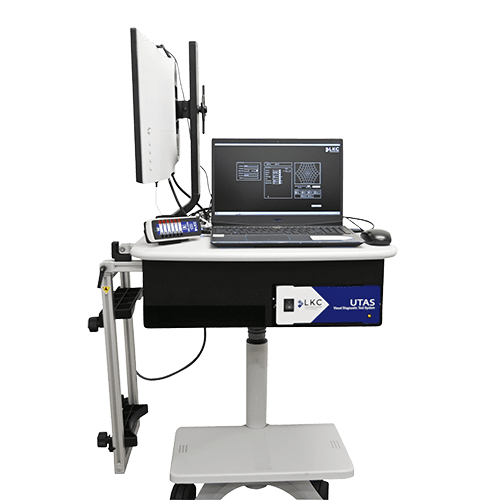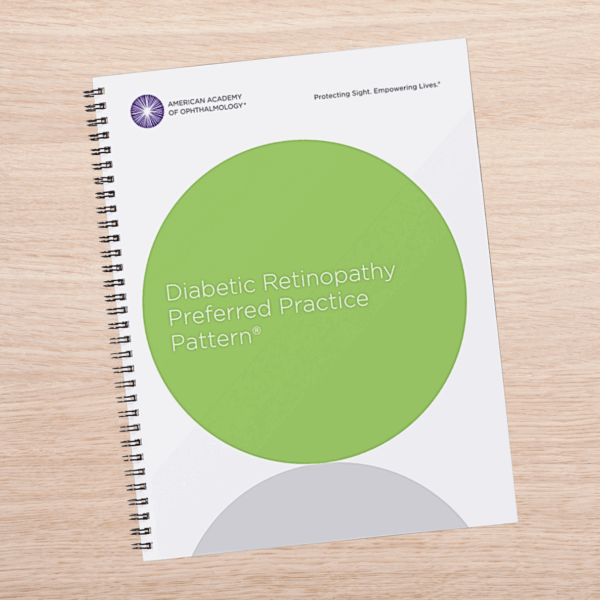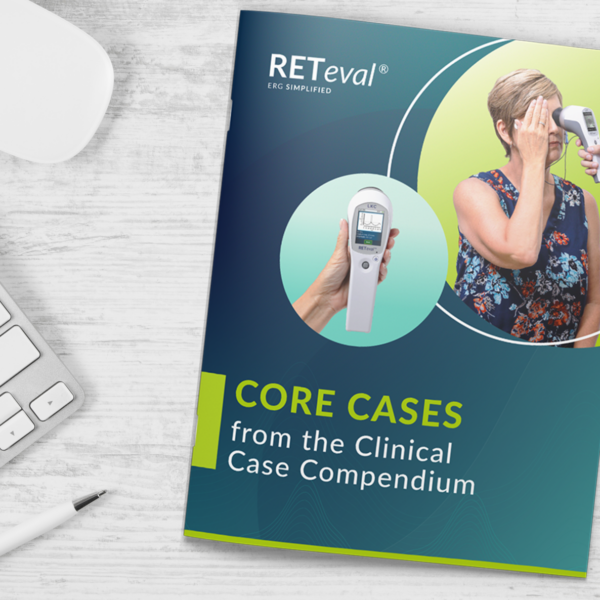
Electrorretinografía y potencial evocado visual
Vaya más allá de Estructura
Measure Function
Logre resultados superiores para sus pacientes y potencie sus investigaciones con las pruebas de ERG/PEV para entender de forma más objetiva y completa la función de la retina.
Oftalmología Veterinaria
¿Por qué llevar a cabo las pruebas de ERG o PEV?
Las soluciones de pruebas ERG (Electrorretinografía) y pruebas PEV (Potencial Evocado Visual) desempeñan un papel vital en la obtención de información diagnóstica tanto en humanos como en animales, ayudando a los médicos e investigadores con datos completos sobre cómo funcionan la retina y las vías visuales.
Nuestros dispositivos de ERG/PEV

RETeval®
El único dispositivo de ERG/PEV aprobado por la FDA, portátil, basado en batería y no midriático. De conformidad con las directivas de la ISCEV. Muy fácil de utilizar.

RETevet™
For both veterinary ophthalmologists and researchers, measure an animal’s retinal function with a view of the eye in real-time.

UTAS™ mf/PERG
Compact and comprehensive testing for multifocal and pattern ERG and VEP assessments. Intuitive interface and fully ISCEV-compliant.
¿Necesita suministros?

ERG Named in Preferred Practice Pattern Guidelines for Diabetic Retinopathy
The American Academy of Ophthalmology’s inclusion of ERG demonstrates its valuable role in both diagnosing and managing diabetic retinopathy. This decision reflects the growing recognition that objective, functional testing, alongside structural imaging, is critical for a comprehensive DR assessment.
See why clinicians are calling this a pivotal moment in eye care history >
Estamos muy contentos con el RETeval. Ha cambiado la forma de la que actuamos y nos ha permitido disminuir significativamente la cantidad de ERG con anestesia que realizamos. Además, ha resultado en un diagnóstico precoz de pacientes con degeneraciones hereditarias de la retina.


Practical Implementation of ERG into a Comprehensive Practice
Chris Wolfe & EyeCode Education
With this course by Chris Wolfe, OD, FAAO, Dip. ABO, available from Practice Performance Partners, you’ll know exactly when and how to use ERG to improve patient care and protect your practice. We’re giving away coupon codes so you can take the course for FREE!
Webinars
These webinars offer tips and comprehensive information on why electrophysiology and LKC’s systems and devices are the perfect solution for you.

The Blueprint for Functional Assessments

How can ERG predict vision loss in a busy retina practice?

New to Functional Testing? Here are the ABCs of ERG.

RETeval: Core Cases from the Clinical Compendium
With the incorporation of a single simple test, these eyecare providers are elevating their patient care through easier management decisions and better patient education.
With each of the 4 cases presented in this eBook, learn:
-
- Why was an ERG performed?
- ¿Cuáles fueron los hallazgos del ERG?
- How did the ERG impact next steps?
“RETeval really has made me a better diagnostician. It has allowed me to get early information about a patient’s eye health before disease becomes clinically visible.”


Acerca de LKC
LKC Technologies® is a 35-year veteran of visual electrophysiology (ERG). The RETeval ERG is the only handheld, FDA-cleared device for ERG testing on dilated and un-dilated patients. It was designed to streamline clinic operations and simplify testing for staff and patients alike. It is supported by more than 250 peer-reviewed publications and is used in optometry, ophthalmology, and research settings.
Últimos artículos

Case Study: Electroretinography in Diabetic Retinopathy
Optometric Management, May 2025
Think your patient’s vision is fine because their HbA1c is controlled? Think again. This patient was sure his GLP-1 fixed everything – until ERG results told a very different story.

The Chris Wolfe Podcast: Exploring ERG Technology in Eyecare
EyeCode Media, April 2025
Drs. Chris Wolfe and Bradley Grant discuss their experiences with ERG technology, telehealth, and the evolving landscape of ocular disease management.

Routine electroretinography use supports patient management
Optometry Times, February 2025
The integration of routine electroretinography (ERG) in clinical practice enhances patient management by providing objective, actionable data for diagnosing.
Últimas investigaciones
Could a hand-held, visual electrophysiology device theoretically reduce diagnostic waiting times for complex eye conditions in the NHS?
March 28, 2025
Bayer S, Garillo D, Penn M, et al. A Discrete Event Simulation (DES) modelling study. Published online March, 28, 2025.
Coats like vitreoretinopathy in retinitis pigmentosa – Multimodal imaging and management
March 1, 2025
Kapoor R, Parameswarappa DC, Jalali S. Published online March 2025.
Measuring differences in the ERG in myopia using the RETeval device with skin electrodes
February 13, 2025
Stapley V, Anderson RS, Saunders K, Mulholland PJ. Ophthalmic Physiol Opt. Published online February 13, 2025.
More about the RETeval ERG/VEP device
Popular Topics: Make a Difference in Diabetic Retinopathy Care | Glaucoma Evaluation with RETeval PhNR Test | RETeval Device Reference Data | RETeval in Optometry
Case Studies: ERG Demonstrates Stable Function Despite Severe Structural Damage | ERG Supports Treatment Decision in Diabetic Retinopathy | Photopic Negative Response as a Reliable Method for Glaucoma Follow-up in Children | A Tale of Two Patients | Vision Complaints Reflected on ERG | Predictive Value of Combining Diagnostic Technologies| ERG Provides Clarity When Fields and OCT Are Inconclusive| ERG Raises Red Flag, Changing Management Trajectory | ERG Provides Confidence to Monitor or Treat | ERG to Determine Ischemic Status | ERG to Replace FA for CRVO Treatment Decision | Using ERG to Monitor Glaucoma | Routine ERG Use Supports Complex Patient Management | ERG Alters Follow-up Schedule and Education for Patient with Diabetes | Using ERG for Management of Birdshot Chorioretinopathy | Using ERG to Monitor Glaucoma | Comprehensive Pediatric Assessment Using ERG in Challenging Cases | ERG Above and Beyond Retinal Imaging | ERG’s Role in Diabetic Retinopathy Progression Monitoring | Evaluación de riesgos basada en ERG en CRVO | ERG Supports Diagnostic Accuracy in a Pediatric Patient
Ebooks: Core Cases from the Clinical Compendium | Modern Fundamentals of Diabetic Retinopathy Management in Optometry | Elevating Patient Care with ERG
Articles: Electroretinography Added to AAO’s Diabetic Retinopathy Preferred Practice Pattern Guidelines | ¿Es cómodo el dispositivo RETeval para los pacientes? |The Use of RETeval ERG/VEP en oftalmología pediátrica | How RETeval ERG Has Enhanced My Practice | The Use of RETeval ERG/VEP in Pediatric Ophthalmology | The Ultimate Guide to Diabetic Retinopathy in Primary Eyecare | What Type of Functional Testing Do You Prefer for Patients with Diabetes? | Major Milestone: RETeval Referenced in over 200 Publications | Collaboration to Elevate the Standard of Care for DR | Is ERG Needed if You Have Access to a Good Structural Imaging Device? | UN ENFOQUE SENCILLO PARA EL MANEJO Y APOYO DE LOS PACIENTES CON DIABETES | Simplify Grading and Risk Assessment in Diabetic Retinopathy | Simplify Daily Decision-Making with Modern ERG | Objective Functional Testing Needs in Diabetes and Glaucoma | Why Modern ERG is Re-Defining Diabetes Management | Diabetic Retinopathy Management Protocols for Optometry
Videos: RETeval: More Information, Better Decisions | RETeval: Eliminating Confusion in Clinic | RETeval: Function to Rely On | RETeval Handheld ERG: Features & Benefits | RETeval: Enhancing Collaborative Care | Handheld ERG for Primary Eyecare | Advice for Optometric Colleagues about Handheld ERG | Making a Difference in Diabetic Retinopathy Care | Changing the Way We Think About Electrodiagnostics | ERG Testing Made Simple | VEP Testing Made Simple | ERG Waveform | Introduction to Visual Electrophysiology | A Superior DR Progression Risk Assessment with the RETeval manual y portátil, | Improve Glaucoma Management with the RETeval Handheld ERG Device | Reshaping the Retinal Diagnostic Landscape | New Solutions for Infants with ROP | Using the RETeval in Myopia Research
Webinars: ABCs of ERG | Ready for RETeval | ERG in Action | Blueprint for Functional Assessments | Predicting Vision Loss in a Busy Retina Practice | Objective, Functional Testing for Glaucoma? | Best Management Practices for Diabetic Retinopathy | How the RETeval Device Became a Daily Instrument in my Diagnostic Toolkit
¡Hablemos!
Solicite una demostración o más información sobre nuestros dispositivos.



